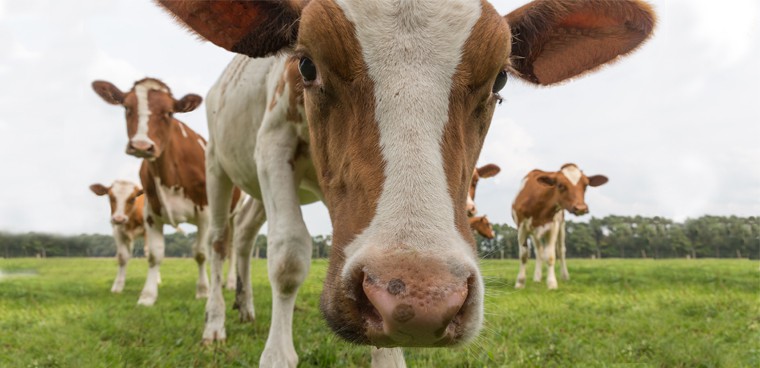
Fable and mystery surround the origins of the Guernsey breed. One theory suggests that the cattle were first brought to the Isle of Guernsey, a Channel Island between England and France, in 960 CE by militant monks who had been banished from the French monastery at Mont Saint-Michel. While that story cannot be verified, the Guernsey breed is indeed believed to have developed from cows imported from France to Guernsey more than 1,000 years ago.
The Guernsey was introduced to America in the 1830s, when a captain from Boston imported two heifers and a bull to his brother’s farm in New Hampshire. Today there are nearly 50,000 Guernseys in the United States.
Appearance and Temperament
The Guernsey’s gentle disposition is a quality that attracts many farmers to the breed. Grace Harbor Farms in Custer, Wash., depends on Guernseys for all of its cow’s milk. Owner Tim Lukens chose the breed because he’d heard it had a reputation for good behavior. That meant “I could train [the Guernseys] to get into the itty-bitty goat-sized milking parlor I have,” Lukens says.
Guernseys are categorized as medium- to-large cattle, with cows typically weighing in around 1,400 pounds and bulls at 2,000 pounds. Their height averages 54 inches. A purebred Guernsey has a red or fawn coat with a white underside, a cream-colored muzzle, and amber feet. The animal’s tawny hue, along with its rich, yellow milk, has earned it the nickname “Golden Guernsey.”
Milk
Guernsey cows are perhaps best known for their milk’s nutritional properties. The milk is an excellent source of beta-carotene, an antioxidant that improves vision and heart and lung function, in addition to giving the milk its rich, golden tone. It’s also high in A2 beta-casein, a protein that some nutritionists say is easier to digest for the lactose intolerant.
An average Guernsey can produce 4.6 to 5.5 gallons of high-butterfat, high-protein milk per day. The cow’s medium stature means it consumes 20 to 30 percent less feed per pound of milk produced than its larger counterparts such as the Holstein.
Cheese
Research has shown that more than half of all Guernseys carry the kappa casein “B” gene, which is linked to higher protein yield, and ultimately may lead to a firmer curd in cheesemaking, according to Robert Blair’s Nutrition and Feeding of Organic Cattle (CABI, 2011). The milk’s relatively high butterfat content—4.5 percent, on average—lends a creamy flavor to any cheese, from a soft Brie to a mild cheddar.
Editor’s Note: This article originally contained an image that was incorrectly labeled as a Guernsey cow. Culture regrets the error.



